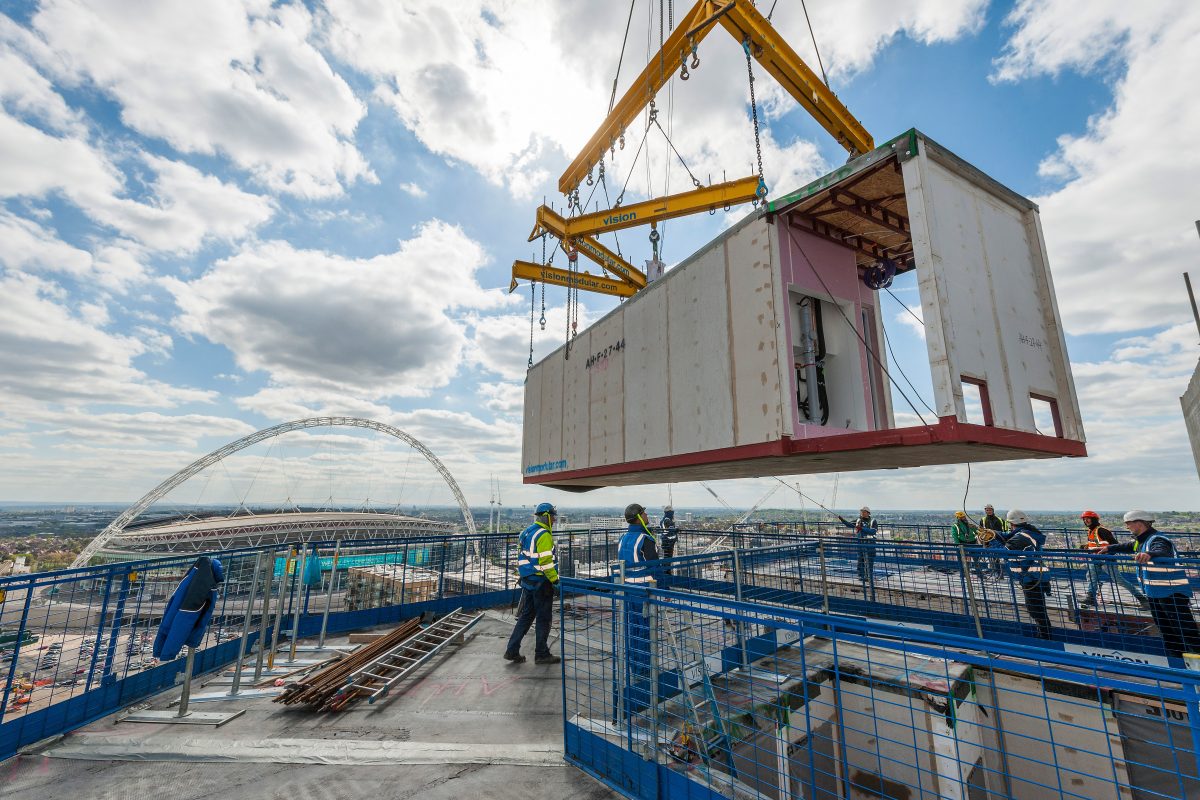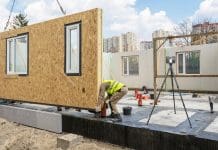Modular construction has become increasingly popular in recent years and has even been hailed as the future of the construction industry, but while technology takes leaps and bounds, the sector still has many obstacles to overcome. We take a look at all things modular
Modular construction, what’s that?
Modular construction is the method by which a building or home is constructed offsite, within a factory setting. Whilst traditional construction is a process whose primary elements are constructed onsite, modular techniques allow for the construction of individual modules to be carried out offsite, the finished units are then transported to the development site for installation.
What are the advantages of modular construction?
It can be cheaper
One of the major benefits of modular construction is its level of affordability. As most of the construction takes place indoors, the expense connected with weather-related delays (common with British weather!) when constructing outdoors is avoided.
The fact that can sometimes be cheaper has led to some unfavourable opinions and as a result of the poor quality prefabricated homes in the 1950-60s; a somewhat out-dated stigma has been attached to the process. It’s important to remember though, before judging we must take into consideration the evolution of building materials and regulations that have occurred in recent years. Maybe it’s time to rethink the ‘poor quality’ misconception?
Considerably speedier
Modular building occurs in synchronisation with site work, allowing projects to be completed in half the time of traditional construction. Because of this projects can be completed between 30-50% sooner than conventional techniques. Weather delays also don’t cause push-backs to the construction schedule.
Despite previous beliefs, modular buildings are built to meet (and even exceed) the same building regulations and standards as properties built onsite.
It’s usually greener
Due to the factory setting, the process tends to generate less waste. Modular buildings can be disassembled and reused, therefore reducing the demand for raw materials and creating a longer lifecycle for the building.
The factory-controlled setting also contributes to improved air quality. Incorporating eco-friendly building materials is now a distinctive part of the modular building process, lowering the environmental impact of prefabricated builds.
There’s less noise pollution
This one’s pretty obvious… the factory setting means there is no need for building material deliveries, and noisy on-site machinery or large numbers of staff.
In addition to the environmental benefits, this also means sites are less likely to receive complaints and can be built both quicker and more harmoniously with the surrounding community.
What are the disadvantages of modular building?
Size limitations
One of the main downsides of modular construction is that the room sizes are typically smaller. The module units need to be transported to site by roads, leading to restrictions on the heights and widths.
They can come with financing issues
Modular houses require a corresponding finance plan that differs from a mortgage plan associated with conventional homes. Banks have been known to refuse a traditional loan until construction on the home is complete; this means the owner may have to take out a loan with their modular builder… which could have a high interest-rate!
Limited customisation
While modular homes can be built in a variety of configurations, it is not as straightforward to customise them as it is to do so with a traditional home. Depending on who you select to build your modular home, you could be left with a limited amount of layout options and material possibilities.
Your home may have less flexibility in the design stages than you anticipated.
Land costs
Despite modular homes costing less to build, we must consider the additional costs of purchasing a piece of land for the home. The price of land combined with a house can be quite a surprise to those unprepared. So it’s best to ensure you don’t underestimate the costs when deciding on going modular!
Did you know there are two types of modular construction?
It’s worth knowing that there are in fact two distinctive industry segments in which modular buildings fall into.
Permanent Modular Construction
Otherwise referred to as PMC, permanent modular construction is a sustainable, innovative offsite method which utilises lean manufacturing practices to prefabricate multi-story or single building solutions. With PMC, modules are either retrofitted to existing buildings, or projects can be designed around modular building techniques as a turn-key solution from the start.
Relocatable Buildings
The clue’s in the name here. A relocatable building is a completely or partially assembled building that fulfils the applicable codes or regulations and is constructed in a manufacturing facility using modular processes. They are designed to be reused and repurposed multiple times and as such are transported between several sites.
It is likely that this process is utilised within mobile classrooms, showrooms or temporary healthcare clinics.
Relocatable buildings often offer fast delivery, low-cost reconfiguration, ease of relocation, accelerated schedules and vast flexibility. Relocatable buildings are vital in cases where speed, temporary space, and the ability to relocate are necessary.
Could modular buildings solve the UK’s housing crisis?
Now that we’ve looked at what modular construction is and what the process entails, it’s worth delving into the future of modular and what it can do for us in the long run.
It’s no secret that the UK is currently facing a severe housing shortage, couple that with the on-going skills crisis, and we’ve definitely got a problem on our hands. Maybe it’s time for the industry to crawl out of the darkness and into light… by this I mean it’s time for professionals to embrace new and innovative ways of addressing the worsening housing crisis.
I’m not saying that modular/offsite is going to solve this problem all on its own, although it’s worth seriously considering adopting this modern method of construction (MMC), as it would appear traditional techniques are failing to meet the demand.
In order to embrace offsite and modular processes, the industry requires modernisation. This modernisation will not only improve productivity but it will also increase the attractiveness of the industry to potential entrants. This is certainly a case of ‘easier said than done’ as the construction industry is struggling to keep up with the technological advances and unlike other sectors; it is falling behind the level of innovation needed.
It will take coordination from both the government and the construction industry to make modular construction commonplace in the UK housing sector.
We think modular techniques are revolutionary and should be taken more seriously… but that’s enough from us, what do you think?!

















